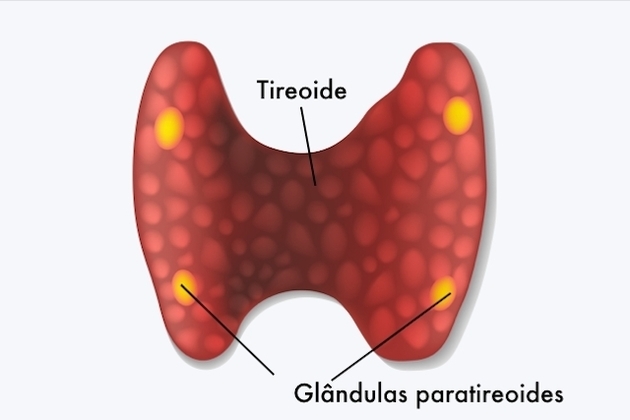At parathyroids, also known as parathyroids, are glands that belong to the endocrine system.
The parathyroid glands work in the body to help regulate nutrients such as calcium and phosphates.
Location of Parathyroids

The parathyroids are located in the neck region, behind the thyroid.
There are cases of people who have three or only one pair of parathyroids, thus resulting in need for medical care in order to maintain the body with calcium and phosphate levels regulated.
The location of the parathyroids can still occur in the chest, more specifically in the mediastinum, which is the central space between the lungs, but these are rarer cases.
Anatomy of the parathyroid glands

The parathyroids are formed by a set of four small glands in the human body that measure approximately 6 mm x 4 mm x 2 mm. With a yellowish color, its weight is about 40 mg.
Each parathyroid is covered by a kind of connective tissue capsule, whose function is to support groups of secretory cells.
Function of the parathyroid glands

Considered as part of the endocrine system, the function performed by the parathyroids is to control the amount of calcium in the body. For this, it relies on hormones from the parathyroid glands, also known as parathyroid hormone.
Parathormone (PTH) has the function of maintaining the level of calcium necessary for the proper functioning of the body. Maintaining control of parathyroid hormone in the human body is extremely important for the regulation of calcium in the blood, as it prevents skeletal muscle cells from undergoing contractions.
parathyroid diseases
Parathyroids can cause consequences in the body if they are not at regular levels. Find out below about the diseases related to these glands.
hypoparathyroidism
Hypoparathyroidism is when the PTH level is below what the body needs.
The main causes are related to post-surgical consequences for thyroid removal, especially because of their proximity.
Hypoparathyroidism can also be caused by:
- autoimmune diseases;
- Infiltrative diseases such as hemochromatosis, which is the accumulation of iron in tissues.
hyperparathyroidism
Hyperparathyroidism is when the PTH level is above necessary and one of its main causes may be related to a drop in blood calcium or low levels of vitamin D and/or magnesium.
One of the main consequences that hyperparathyroidism can cause is the formation of kidney stones, increased diuresis, constipation, gastric ulcers and pancreatitis.
learn more about:
- Organs of the human body
- Glands of the Human Body
- hypothyroidism
